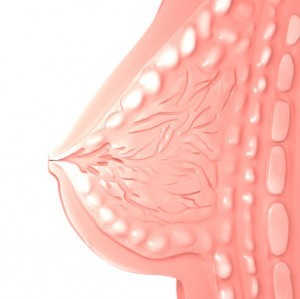Low Breast Milk Supply
New mothers are often concerned about their breast milk supply. A common fear is that breast milk production will be insufficient to meet with a newborn’s nutritional needs. In most cases, a mother’s breast milk supply will be adequate and will not hamper the baby’s growth.
However many nursing mothers do experience a low breast milk supply, due to hormonal and/or physiological factors. For mothers who are keen on breastfeeding, simple measures such as proper feeding techniques and good nutrition may be sufficient.
Similarly, many mothers become obsessive about their breast milk supply. A perceived lack of breast milk causes great stress and anxiety for mothers wishing to breastfeed. If a baby is gaining weight in accordance with the baby’s growth chart, is active, appears healthy and able to feed frequently, then the breast milk supply is likely to be adequate.
Breast Anatomy and Physiology of Breast Milk Production
Breasts are underdeveloped at birth and start to grow in size during puberty as a result of hormonal stimulation. Pregnancy and lactation cause further growth in breast size but the size of the breast is not related to the amount of milk production.
During pregnancy the breasts enlarge and the glandular tissues prepare for milk production. The hormone prolactin is responsible for milk production and oxytocin helps in milk “let-down” or the milk ejection reflex from the nipples as the baby suckles at the breast.
The breast is made up primarily of fatty tissue, and glands which produce milk during the late stages of pregnancy and after childbirth. Each breast consists of 15 to 20 lobes, made up of lobules, which are further composed of groups of hollow sacs called alveoli. The alveoli produce and store breast milk. The lactiferous ducts (milk ducts) drain the milk and aggregate it near the areola (the dark circular area around the nipple). Here the ducts form ampullae, which are cavities for storing milk before it is ejected through the nipples. Montgomery’s glands are oil glands situated around the areola and help to lubricate the nipples.
Colostrum (‘Yellow Breast Milk’)
Colostrum is a thick, yellowish form of milk which is rich in proteins, vitamins and minerals. Most importantly, it contains antibodies, which helps to protect against infection. Colostrum production usually starts during the second trimester of pregnancy and many women have milk discharge from the breasts around this time. Colostrum secretion from the breasts normally starts after childbirth and persists for a few days after delivery.
White Milk Production
About 3 to 4 days after delivery, milk production increases and it becomes whiter and thinner in consistency. Supply will increase further depending on frequency of milk removal from the breast, either due to a nursing baby or mechanical removal by hand or by pump. This is called supply-demand-response. Foremilk is the first milk that the baby sucks at the beginning of each feed. This is low-fat milk which collects in the breasts in between feeds and is rich in proteins and carbohydrates. Hind milk is the milk that follows after this and is rich in fat and calories.
How to know if your breast milk supply is low
Many mothers are concerned that their breast milk supply is inadequate due to a lack of ‘fullness’ of the breast of if there is no visible leaking of milk between feeds. These signs are not sufficient to conclude that there is a low breast milk supply. Once the body adjusts to regular milk production, a feeling of ‘fullness’ and dribbling of milk from the breast may not be apparent.
Other concerns revolve around the baby’s feeding habits or if the baby’s intake of milk is sufficient. There may be instances where the milk production is sufficient, although the baby may not be able to access the milk. This is often due to a poor feeding technique, an underdeveloped suckling reflex especially in premature babies and the baby’s individual appetite.
Weight gain
If a breastfed baby is not gaining weight in accordance with their growth chart, then this may be a sign of an inadequate breast milk supply or difficulty accessing the milk. A newborn baby tends to lose 5% to 10% of their birth weight in the first few days of life – this is normal and not a sign of poor nutrition. After this period, the baby gradually gains weight and within 10 to 14 days, the birth weight is restored.
A simple home measure for assessing a baby’s weight gain is to ensure that the baby gains an ounce a day in the first 3 months. After this, weight gain of half an ounce a day from 3 to 6 months is considered acceptable. However it is always advisable to consult with a pediatrician on a regular basis for monitoring the baby’s growth and development.
Frequency of nursing
If a baby feeds frequently, every 2 to 3 hours, and has at least 8 to 12 feeds a day, then it is unlikely that the breast milk flow is inadequate. A baby that settles down between feeds is also a good sign that the frequency and quantity of feed is sufficient.
Other signs and symptoms to indicate sufficient breast milk production and adequate feeding include :
- The baby is healthy and active as would be expected for a child of that age.
- Passing at least 3 stools a day in the first month of life. This may subsequently reduce but if a baby does not pass out stool on a daily basis or if there is obvious straining and a hard stool, then this may be a sign of infant constipation.
- Audible and/or visible swallowing is a good sign.
- Breaking wind (eructations or burping).
- Slight regurgitation of milk after a feed, which may seen at the corners of the mouth.
- Wetting (urinating) 7 to 8 cloth diapers or 5 to 6 disposable diapers in a day. Modern disposable diapers have a drying gel to reduce dampness and it may not always be obvious once the baby urinates.
Causes of Low Breast Milk Supply
Breast milk production depends on hormones, like prolactin, as well as physical and mental wellbeing of the mother. The main contributing factor to a low breast milk supply is infrequent or short periods of feeding. This may be purposeful on the part of the mother or a result of one of the following causes :
- Mastitis or breast inflammation.
- Nipple and/or breast pain.
- Breast engorgement.
- Lethargic nurser or unwillingness to breastfeed.
- Stress or fatigue.
- Post-partum depression.
Other causes of a low breast milk supply may be due to :
- Poor latch-on technique which causes ineffective suckling due to improper positioning.
- The baby may not be able to feed properly due to problems such as tongue-tie, cleft lip or cleft palate.
- Hormonal disorders.
- Retained placenta or post-partum hemorrhage.
- Breast surgery – past history of breast surgery, especially breast augmentation.
- Past history of infertility, particularly in relation to polycystic ovary syndrome (PCOS).
- Contraceptive pills (birth control) containing estrogen.
- Systemic illnesses such as diabetes, hypothyroidism and anemia.
- Certain drugs such as cold and flu medication.
- Cigarette smoking.
- Excessive caffeine intake or alcohol abuse.
- Limiting the baby’s time for breast feeding or failure to offer both breasts during each feed.
- Bottle feeding between breastfeeding sessions may cause nipple confusion. The baby may prefer bottle feeding and refuse the breast. Alternatively, a bottle fed baby is less likely to breastfeed as often or to the same extent which diminishes milk production.
- Early introduction to solid foods will have the same impact on the baby’s feeding habits and result in reduced breast milk production.
- Pacifiers also cause nipple confusion and the baby may refuse to breast feed after getting used to sucking the pacifier.
- Use of a nipple shield decreases stimulation of the breast and the amount of milk transferred to the baby.
- In the first few weeks, a baby usually sleeps for most of the day and night. Some babies are known as a ‘sleepy baby’ and tend to drink less frequently due to longer periods of sleep. A baby should be breastfed every 2 to 3 hours during the day and every 4 hours at night to ensure a continuous flow of milk.
- Working mothers who return to their jobs soon after childbirth may experience a lower breast milk supply due to long hours without breastfeeding.
How to increase the breast milk supply
If it can be conclusively ascertained that the breast milk supply is low and it is insufficient for the baby’s growth and development, then measures should be taken to increase milk production. Breastfeeding should always be encouraged and the supply should be increased when necessary rather than immediately switching to bottle feeding.
A few measures that may assist with increasing the breast milk supply includes :
- Correct positioning of the baby during feeds.
- Frequent feeding or feeding on demand (by the baby).
- The mother should drink sufficient amounts of liquids – water, juice or milk.
- Proper nutrition for the mother.
- Avoiding supplements.
- Pumping out or expressing breast milk after a feed.
- Adequate rest
If these fail, certain medicines, called galactagogues, may help to increase the breast milk supply.
Prolactin levels in the body control lactation or milk production and it may be inhibited by prolactin-inhibiting factors, like dopamine, a chemical messenger in the brain.
Galactagogues work by blocking dopamine and thus cause an increase in prolactin levels. They may not be effective in all women, especially if the prolactin levels are high, yet the breast milk supply is low. Galactagogues are drugs used for other medical conditions, like gastrointestinal disorders, but one of their side effects is galactorrhea (excessive milk production). While this side effect is undesirable under other circumstances, it is beneficial for a nursing mother with a low breast milk supply.
Galactagogues – Milk Producing Drugs
These drugs should be prescribed by your doctor after assessing your individual situation.
- Metoclopramide is sometimes prescribed to increase breast milk supply and should not be used for more than 3 to 4 weeks. Side effects such as depression and mood swings may occur so it should be used with caution in mothers with a history of depression. Other side effects may include gastric upsets, nausea, diarrhea and seizures.
- Domperidone may be used 3 to 4 times a day, to increase breast milk and seems to have fewer side effects than metoclopramide.
- Sulpiride, a drug primarily used for schizophrenia, is used in some countries as a galactagogue.
The benefits of breast feeding, both to the mother and child, cannot be overemphasized. Every effort should be made to assist an enthusiastic mother with adequate milk production in the event of a low breast milk supply.






